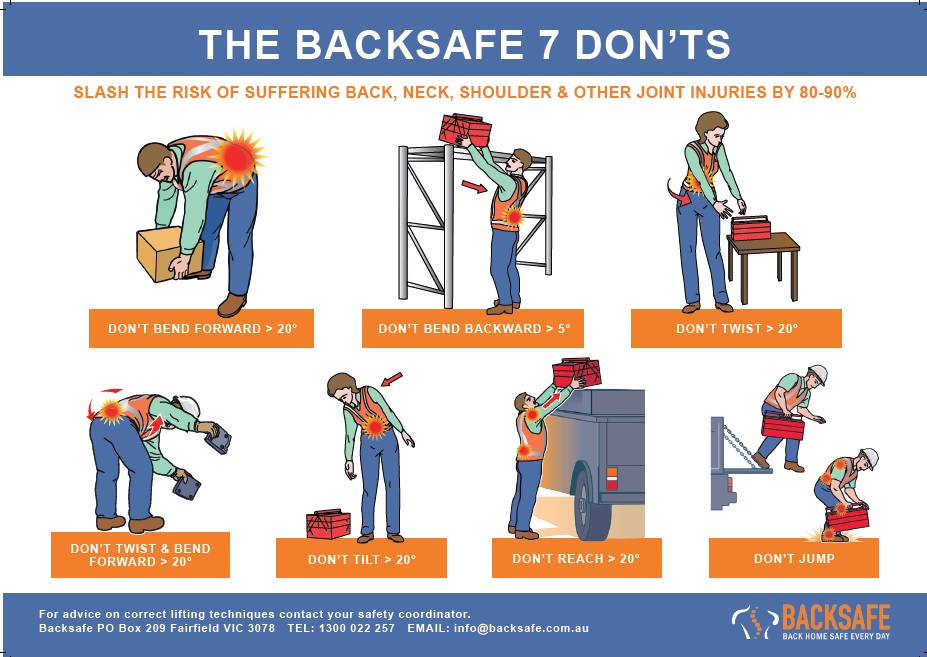Ergonomic injuries are conditions that result from strain or damage to the musculoskeletal system due to repetitive or prolonged tasks that cause discomfort and pain. These injuries can occur at home, during leisure activities, or most commonly, in the workplace. Understanding the nature, causes, and impact of ergonomic injuries is crucial for prevention, early detection, and effective treatment.

Understanding Ergonomic Injuries
In order to comprehend the concept of ergonomic injuries fully, it is necessary to first establish a clear definition. Ergonomic injuries refer to physical ailments that arise from activities involving repetition, force, or awkward postures over an extended period of time. They predominantly affect the muscles, tendons, ligaments, nerves, and joints of the body.
These injuries are not limited to a specific industry or type of work; they can occur in various settings, from office environments to construction sites. Understanding the causes and prevention of these injuries is crucial for maintaining a healthy and productive workforce.
Definition of Ergonomic Injuries
Ergonomic injuries, also known as musculoskeletal disorders (MSDs) are conditions that affect the body’s movement and function. These injuries often result from repetitive motions, manual labor, and maintaining static or uncomfortable positions for prolonged periods.
It is essential to recognise the early signs to prevent these injuries from progressing into more severe conditions. Educating employees on proper ergonomics and providing ergonomic assessments can help mitigate the risk of developing these debilitating ailments.
Causes of Ergonomic Injuries
Several factors contribute to the development of ergonomic injuries. These can include poor posture, repetitive movements, excessive force, improper equipment setup, and inadequate rest periods. Additionally, factors such as individual physical characteristics, work environment, and job demands play a role in the risk of experiencing these type of injuries.
In today’s work environment, it is not uncommon for individuals to be seated for extended periods of time, or on the other hand, on their feet completing manual tasks all day. Both work environments pose threats in the form of injuries if not addressed early.
Employers can take proactive measures to address ergonomic risk factors in the workplace by implementing ergonomic training programs, conducting regular ergonomic assessments, and investing in ergonomic furniture and tools. By creating a culture of ergonomics awareness and prioritising employee well-being, organisations can reduce the prevalence of ergonomic injuries and promote a safer work environment for all.
Common Types of Ergonomic Injuries
Injuries can manifest in a variety of ways. Understanding the most common types can help individuals identify the symptoms and seek appropriate treatment. The following are some prevalent types of ergonomic injuries:
Musculoskeletal Disorders
Musculoskeletal disorders encompass a range of conditions that affect the muscles, bones, tendons, ligaments, and other supporting structures. These disorders can result in pain, stiffness, swelling, and limited mobility. Examples include tendinitis, bursitis, and myofascial pain syndrome.
Repetitive Strain Injuries
Repetitive strain injuries are caused by repetitive motions and overuse of a particular muscle or joint. Common examples of repetitive strain injuries include tennis elbow, golfer’s elbow, and rotator cuff tendinitis.
Carpal Tunnel Syndrome
Carpal tunnel syndrome is a specific type of ergonomic injury that affects the wrist and hand. It occurs when the median nerve, which runs through a narrow passageway called the carpal tunnel, becomes compressed or irritated. Common symptoms of carpal tunnel syndrome include numbness, tingling, and weakness.
Another common type of ergonomic injury is known as “tech neck.” This condition is prevalent among individuals who spend long hours looking down at electronic devices such as smartphones and tablets. Tech neck can lead to neck pain, stiffness, and headaches due to the strain placed on the cervical spine.
Furthermore, ergonomic injuries can also manifest as eye strain and vision problems. Prolonged exposure to computer screens and inadequate lighting can cause symptoms such as dry eyes, blurred vision, and headaches. It is essential to take regular breaks, adjust screen settings, and ensure proper lighting to reduce the risk of eye strain.

Symptoms and Diagnosis of Ergonomic Injuries
Recognising symptoms is crucial in preventing long-term damage and complications. Early diagnosis and intervention can significantly improve outcomes and facilitate the recovery process.
Musculoskeletal disorders (MSDs), are often caused by repetitive movements, awkward postures, and excessive force exerted on the body. Understanding the risk factors in your work environment and implementing proper preventive measures is key to reducing the incidence of these injuries.
Recognising the Symptoms
The symptoms of ergonomic injuries can vary depending on the type of injury and affected body part. Common signs include pain, stiffness, weakness, swelling, numbness, tingling, and reduced range of motion. It is essential to pay attention to any prolonged discomfort or unusual sensations and seek medical advice if necessary.
In addition to physical symptoms, ergonomic injuries can also manifest as decreased productivity, increased absenteeism, and decreased quality of work. Employers play a vital role in promoting a healthy work environment by providing ergonomic assessments, training employees on proper body mechanics, and offering ergonomic equipment such as adjustable chairs and desks.
Medical Diagnosis Procedures
When seeking a medical diagnosis for an ergonomic injury, healthcare professionals may perform various tests and assessments. These can include physical examinations, medical history reviews, imaging studies, and specialised tests to evaluate nerve function and muscle strength.
Early intervention through physical therapy, ergonomic modifications, and lifestyle adjustments can help manage injuries effectively and prevent them from progressing into chronic conditions. By addressing the root causes of these injuries and promoting a culture of health and safety in the workplace, individuals can reduce their risk of developing debilitating musculoskeletal disorders.
Prevention and Treatment of Ergonomic Injuries
Preventing ergonomic injuries should be a priority both for employers and individuals. Employers play a crucial role in preventing these injuries by providing assessments, offering ergonomic equipment, and promoting a culture of health and safety in the workplace.
By implementing appropriate measures, such as ergonomic practices and adjustments, the risk of developing these injuries can be significantly reduced.
Additionally, various treatment options are available to manage and alleviate symptoms when injuries do occur.
Ergonomic Practices for Prevention
Prevention of ergonomic injuries involves optimising workstations, tools, and equipment to reduce strain on the body. Ensuring proper ergonomics entails maintaining neutral body positions, providing adjustable furniture, promoting regular breaks, and providing education and training on ergonomic practices.
Furthermore, incorporating ergonomic accessories such as wrist rests, footrests, and monitor stands can enhance comfort and reduce the risk of strain injuries for office workers. Encouraging employees to practice good posture and proper lifting techniques can also contribute to a healthier work environment and decrease the likelihood of injuries within a manual labor workplace.
Treatment Options for Ergonomic Injuries
When injuries occur, timely treatment is essential to prevent further damage and aid in recovery. Treatment options may include rest, physical therapy, pain management techniques, splinting or bracing, and in severe cases, surgery. The specific treatment plan will depend on the type and severity of the injury.
It is important for individuals experiencing ergonomic injuries to seek medical attention promptly and follow the prescribed treatment plan to facilitate a full recovery. In some cases, ergonomic modifications to the work environment may be necessary to prevent re-injury and promote long-term musculoskeletal health.
The Impact of MSD’s on Work and Lifestyle
Injuries not only affect individuals physically but also have a profound impact on their work performance and daily life activities.
Effects on Work Performance
Ergonomic injuries can significantly impair work performance. Individuals experiencing discomfort and pain may have reduced productivity, increased absenteeism, and decreased job satisfaction. It is the Employers job to create ergonomic-friendly work environments to minimise the impact of these injuries.
Influence on Daily Life Activities
Ergonomic injuries can also impact an individual’s daily life activities. Simple tasks, such as household chores or hobbies, may become challenging or even impossible to perform. Maintaining a well-balanced lifestyle, incorporating regular exercise, and adopting proper ergonomics in daily activities can help manage the impact of these injuries.
By understanding ergonomic injuries, their causes, symptoms, and appropriate prevention and treatment measures, individuals can proactively protect themselves and promote a healthy, productive work environment.




